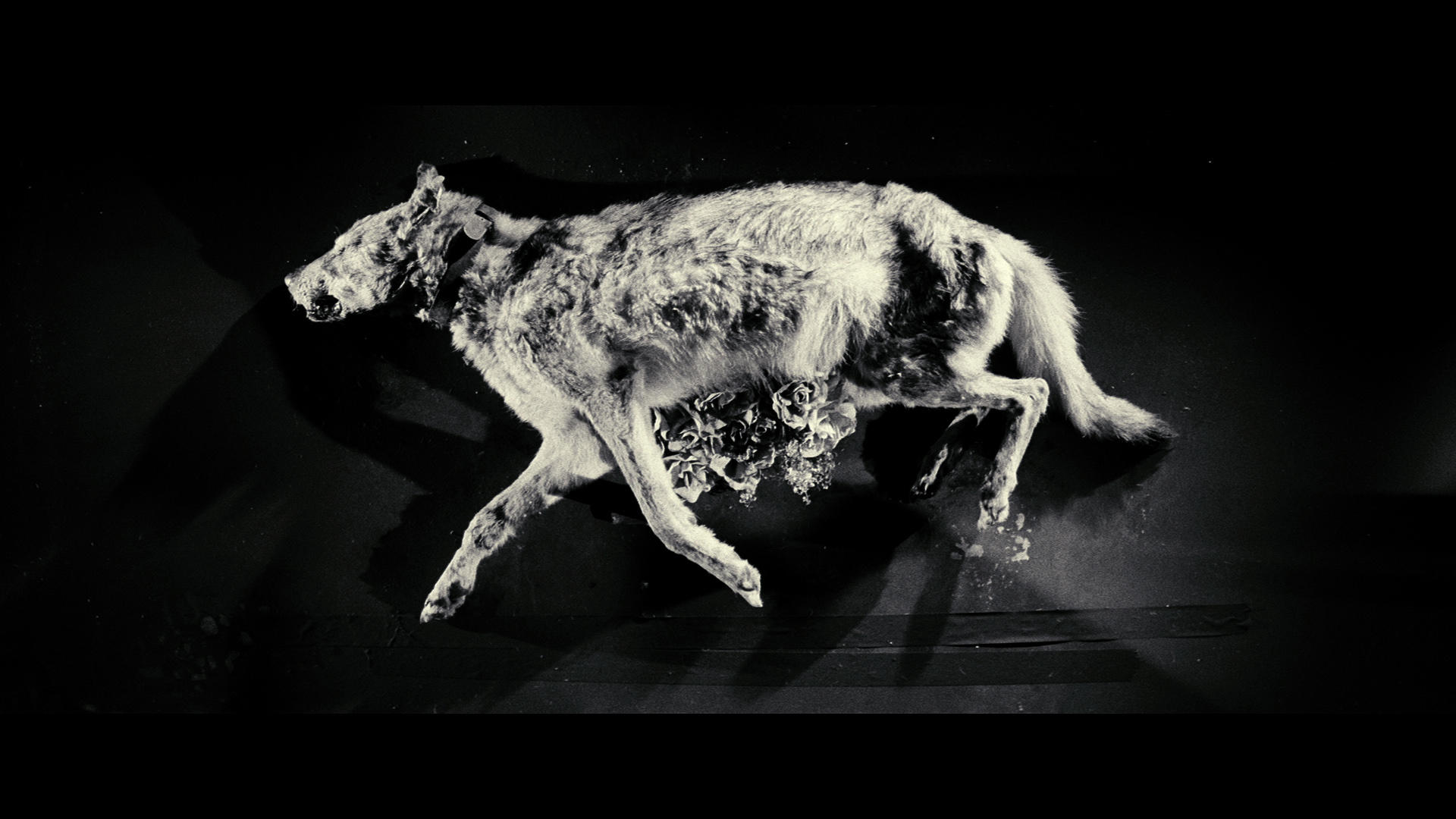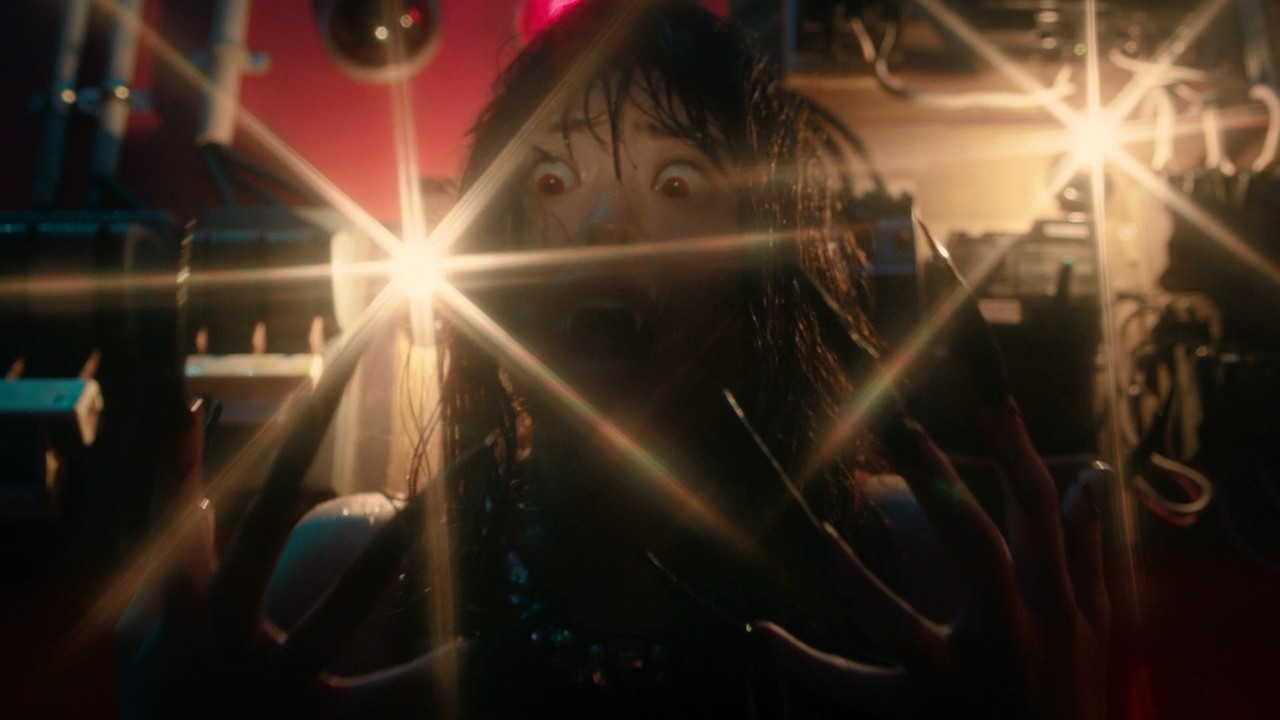 |
| From https://screenanarchy.com/assets_c/2012/09/ BoroInTheBox-thumb-430xauto-23142.jpg |
Boro in the Box
Screenplay: Bertrand Mandico
Cast: Elina Löwensohn as Walerian
Borowczyk (Voiceover) / La mère; Thierry Benoiton as Jerzy; Jacques Malnou as Grand-père;
Elise Hote as Emilia; Laure Lapeyre as Olga; Benoît Serre as L'homme du train; Tom
Cholat as Boro enfant; Ruben Lulek as Boro enfant; Audrey Le Corre as La muse; Mika'Ela
Fisher as Ligia
Synopsis: A perverse tribute, in vignettes in alphabetical and
chronological order, which tells an alternative take on the life of controversial
Polish animator and director Walerian
Borowczyk.
 For the occasional dull quasi-art
house films I've put up with, MUBI's
streaming gift for the most part has been a gift that has been worth the
investment. Sadly it has a thirty day time limit on films, including those you
may have difficulty ever seeing again, but to bastardise a famous quote it is
better to have watched a film than to never have seen it at all, and if that's
the way they were able to access some of the titles they've collected, so be it
a necessary evil. It's definitely the case as they've introduced me to
directors I'd never heard of but fully deserve coverage as filmmakers of the
abstract. One was Khavn, the punkish
one-man band of Philippine cinema, now there's Bertrand Mandico from France, a French director who made his first
short film in 1999 but only really started to become productive in his work
from 2010 onwards, only making his theatrical debut with The Wild Boys in 2017 and making short films beforehand. Parallels
can be made to Guy Maddin, in his
implementation and open influence to older cinema, but he is his own figure and
if it was easier to see his work, defining this distinction would be a hell of
a lot easier for me.
For the occasional dull quasi-art
house films I've put up with, MUBI's
streaming gift for the most part has been a gift that has been worth the
investment. Sadly it has a thirty day time limit on films, including those you
may have difficulty ever seeing again, but to bastardise a famous quote it is
better to have watched a film than to never have seen it at all, and if that's
the way they were able to access some of the titles they've collected, so be it
a necessary evil. It's definitely the case as they've introduced me to
directors I'd never heard of but fully deserve coverage as filmmakers of the
abstract. One was Khavn, the punkish
one-man band of Philippine cinema, now there's Bertrand Mandico from France, a French director who made his first
short film in 1999 but only really started to become productive in his work
from 2010 onwards, only making his theatrical debut with The Wild Boys in 2017 and making short films beforehand. Parallels
can be made to Guy Maddin, in his
implementation and open influence to older cinema, but he is his own figure and
if it was easier to see his work, defining this distinction would be a hell of
a lot easier for me.| From http://fr.web.img5.acsta.net/pictures/14/05/07/10/52/026859.jpg |
We begin with Boro in a Box, his most famous work in which it loosely interprets the life of Polish director Walerian Borowczyk from birth to throughout his career in A-to-Z format, a visible reference to Borowczyk's own short filmmaking like Grandmother's Encyclopaedia (1963). It's a loose interpretation of his life as some eyebrows will be raised high, on display openly its own fantastical and perverse tale where Borowczyk is a man born as a box, a literal Kino-Eye, whose mother has an erotic dalliance with a horse briefly and his career here consists of long warehouses of naked people he films with a living Cronenbergian film camera. Yet wherever Walerian Borowczyk is, he'd probably appreciate the tone, for Borowczyk was a fascinating figure. Beginning in stop motion - (probably the most debatable moment for me is how Mandico dismisses co-director Jan Lenica of the early Polish shorts completely) - Borowczyk was championed for his animation and then his earliest steps into live action feature cinema in the likes of Blanche (1972). Than he was ostracised, until the recent and justly needed critical evaluation in the 2010s, for decades when he switched to erotic cinema with 1973's Immoral Stories, which he stayed in through his career for the most part afterwards but tragically made him a pariah for many, hence that necessary critical evaluation in the 2010s was a vital necessary, making converts like myself when I witnessed his cinema to be precise, full of texture and elegance, sensual and openly transgressive as a virtue.
So he might respect Mandico depicting him, as mention, born
as a literal box on an umbilical cord whose limbs and torso grow out when he
grows up, an obsessive who films when his father gives him a living camera and tries
to find himself in this raw, dirty world of texture, grimness and explicit
sexuality. Beautifully shot in black-and-white, but openly perverse from the
get-go, Mandico springs out of the
gate with his intentions following Boro's conception, his mother with her
sister in the woods, playing "angels" where they choke each other
half to death until they see them, only for her future husband to appear
dressed as a tree and in an uncomfortable blur of molestation and consensual
sex seduce her. This transgression, thankfully, is wide and spans further to
deliberately offend anyone - between full frontal male and female nudity, Boro
having a similar situation with a man in a train cart who'll become his
collaborator, his mother (Elina Löwensohn,
who also provides Boro's voice in the narration) having a sensual interaction
with a horse, which is explicitly referencing Borowczyk's The Beast (1975)
both in its human and beast sex and, in the silhouette of phallus, the more
shocking moment of that film at the beginning where Borowczyk filmed an actual horse castration onscreen. The transgressive
streak, in any other context if the tone was wrong, would offend many but Mandico manages to make it feels
appropriate. It would, in another context, rub people the wrong way how Borowczyk is treated but, like when Isabella Rossellini and Guy Maddin depicted her father Roberto
as a giant stomach in My Dad Is 100
Years Old (2005), it feels appropriate, here gleefully playing to Borowczyk's desire even before his later
erotic films of playing with transgression and subversion.
| From http://www.formatcourt.com/wp-content/uploads/ 2012/02/boro-in-the-box.jpg |
Whilst it's a fantasised story, the tale of Boro fits the real man named Borowczyk, who was respected for his animation and art films only to be damned for his turn to erotic cinema, Boro the Box Headed and his living camera here becoming marginalised in his own world as tragically Borowczyk was, but neither compromising. And aesthetically Mandico's work is incredible, a dream-like but grimy world where dirt, salvia, and various forms intermingled with a fetishisation of bodies and objects Borowczyk also had. Mandico's clear trademarks, whilst following from influences, is a pansexual transgression in the nude bodies onscreen, and depicting Boro having a sexual experience on a train with a man who'd assist him with his films. That and the overt fantastical details which are constant throughout, such as the aforementioned camera, or Boro seducing a woman at a young age with feather on sticks coming out of pockets in his box, leading to her nude body as a giant projection over a fireworks display and Boro running below back and forth to bring her to orgasm.
And it's clear, even as the first
Bertrand Mandico work I have seen,
that starting properly with his career here onwards he's built and honed his
craft over many years, only finally making a feature length film in 2017 with The Wild Boys and, like a few favourite
directors of mine, using the years to churn out shorts that are obsessed with interests
he can draw from with greater depth for later feature films if he so wishes to.
Boro's tale, even in only forty minutes, is a life fully fleshed out, from
recounting experiencing from inside his mother's womb her falling down a cliff
to returning home to his parents one last time after decades in France, and in
spite of its short length it argues of being as expansive and dramatic as any
film considerably longer then it.
 |
| From https://medias.unifrance.org/medias /75/66/82507/format_page/media.jpg |
Living Still Life
Screenplay: Bertrand Mandico
Cast: Elina Löwensohn as Fièvre; Jean-Marc
Montmont as L'homme
Living Still Life, quoting Walt Disney is French in an intertitle
at the beginning, takes animation to an extreme when a woman named Fièvre (Elina Löwensohn) acquires dead animals
in the countryside and animates on a giant canvas in her home. It's immediately
eye catching, as befitting the quotation this 2012 short looks like a live
action Disney film in colour and bright fantastical flora...only to have an
eerie, disturbing yet magical story take place that feels like a dark fairy
tale. One where a ritualistic act, done four times over four acts, lead to Mandico actually animating dead animals
as stop motion creatures.
 |
| From https://67d860664f4b00793cde-967809c7cbb0f14b 111df13fc72409e5.ssl.cf3.rackcdn.com/fiona/editionfilm/76047b51-a9a4-41ac-b803-f8ec976d7f2e.jpg |
As someone who has brushed against thanatophobia, they are very sobering scenes. Powerful, but knowing (unless an incredible practical effects artist was involve) that real animal corpses were used effected even me and would definitely be unsettling for some, worthy of warning even if the character of Fièvre attaches flowers to the burst open stomach of a dog. As with Boro in the Box, the production is incredible, also even in terms of the music in his work, between the at-times creepy score used for Boro in the Box to here appropriately magical but befitting its effective content. All of this builds to when Fièvre comes aware of a man who spies on her through the acts, someone who [Spoiler Alert] wants her to animate his recently deceased wife, synchronising to her own fantasy of animating a dead woman she directly tells the audience in the first scene of the short. [Spoiler Ends]
It would be criminal not to
mention actress Elina Löwensohn at
this point, effectively his muse since she started working in his films since Boro in the Box to The Wild Boys. Already a striking figure physically and as an
actress in the performances, I was surprised when something clicked in my
memory and realised she was the titular Nadja
of Michael Almereyda's 1994 spin on
the vampire story, having gone from that film over the years into a fascinating
run of films with the likes of Hal
Hartley to a variety of idiosyncratic directors, the kind of career that'd
get ignored barring a few major films like Schindler's
List (1993) but for those in the know (and when you see films like Living
Still Life) command respect especially as she is great in both Mandico films I am covering. That she
works with Mandico now is proof of
his abilities, as Boro in the Box
demanded a lot from her beyond the nude scenes whilst still treating her toroles
actors would die for, in a mere short like Living
Still Life providing a complicated character in just a short amount of
time. Together, alongside Boro in the
Box, it paints a great painting of the pair as collaborators.
Abstract Spectrum:
Boro
in the Box: Fantastical/Grotesque/Surreal
Living
Still Life: Eerie/Fantastical
Abstract Rating (High/Medium/Low/None):
Boro
in the Box: High
Living
Still Life: None
Personal Opinion:
In just two shorts, Bertrand Mandico stood out and
immediately won me over with his work. I only hope The Wild Boys, his theatrical length debut, makes his work more
easily accessible in the future.
| From http://imagizer-cv.imageshack.us/v2/640x480q90/921/2858i4.png |












